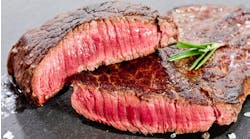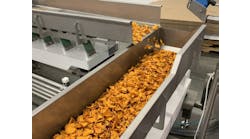Q. Why hasn't predictive maintenance developed faster in food & beverage plant operations?
A. Decades ago -- as far back as the 1970s and maybe earlier -- many food plants ran their operations with a peak quarter production strategy. This strategy was based on the premise that you had enough capital equipment available in your plant to produce the volume required during your peak quarter. Since peak quarter production usually only required a few weeks of higher asset utilization, the resulting annual asset utilization was very low for most food operations. This situation allowed a plant the opportunity to meet their routine weekly output requirements without worrying about unscheduled downtime.
With the consolidations that started in the 1980s and supported by advances in technology, a new production strategy emerged based on the ability to adjust the cost model for food manufacturing by significantly reducing the cost of ownership. This strategy focused on increasing outputs per unit of operation and at the same time reducing the labor, capital and maintenance cost for these units of operations. The result was fewer plants and higher asset utilization.
One of the major elements of this change was the use of preventive maintenance. Food plants began to schedule maintenance, and suppliers began to focus technology on improving run times. As a result major savings could be realized by making investments in this new operational strategy.
Over the past decade, major strides have been made in applying measurement equipment to critical manufacturing processes, developing the newer concept of predictive maintenance. To date, highly complex operations or manufacturing operations with major safety factors have benefited from this development.
To make significant inroads in food processing predictive maintenance, a plant must demonstrate a significant increase in run time versus preventive maintenance -- or, the food plant must require more complex processes and packaging operations to justify the additional cost of the monitoring equipment. The third option would be that technology allows predictive maintenance to migrate into a "newer version" of preventive maintenance at no noticeable increase in cost.

